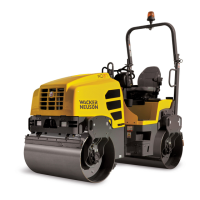Night operations are different than daylight oper-
ations. Pay close attention and stay alert. Others
passing through the work site may not be aware
of hazards.
Plan the job, communicate the plan and inspect
the work area during daylight. Mark obstacles
ahead of time with reflective material.
Wear appropriate reflective apparel at all times –
for operators and crew on night operations.
(FIG. 24)
FIG. 24
Ensure adequate lighting to illuminate work zone
in compliance with state and local regulations and
requirements. (FIG. 25)
Ensure visibility of gauges and controls.
Ensure adequate hazard lights (strobe or flash-
ing/rotating lights) in compliance with state and
local regulations and requirements.
FIG. 25
WORK AT NIGHT SAFELY
23
Utilize direct line of sight, not mirrors, when
working at night. Use spotters when direct line of
sight is not possible. Lights can reflect in mirrors,
causing a hazard to be unseen, or a “blind spot.”
(FIG. 26)
FIG. 26
Lack of natural light will impact visibility and may
increase the risk of being backed over by vehicles
or equipment.
Adjust work lights to minimize glare for traffic and
workers.
Know where the other workers are at all times.
Tell others where you are going.
Beware of fatigue. Check on crewmembers.
Stay in assigned work zones.
Enter and exit machine on side away from traffic if
possible. (FIG. 27)
FIG. 27
24
WORK AT NIGHT SAFELY

